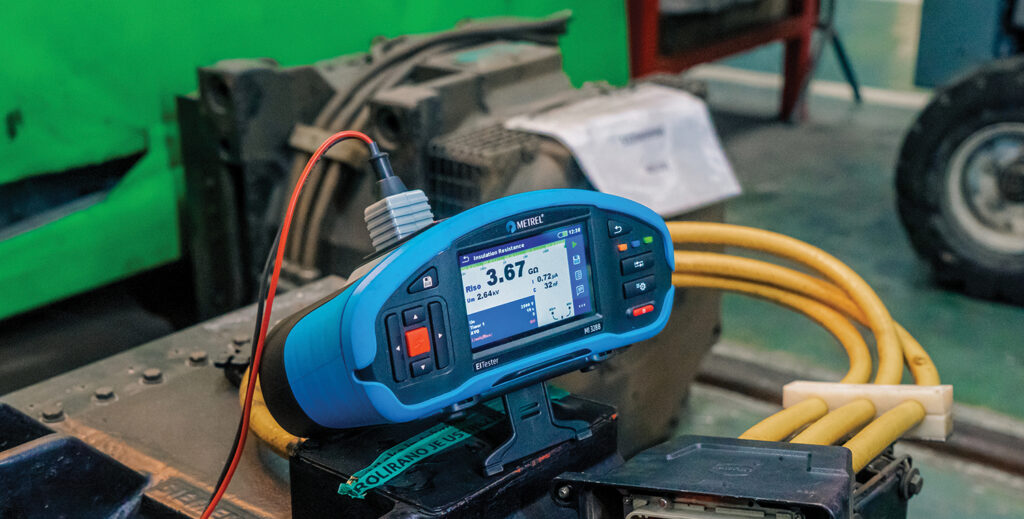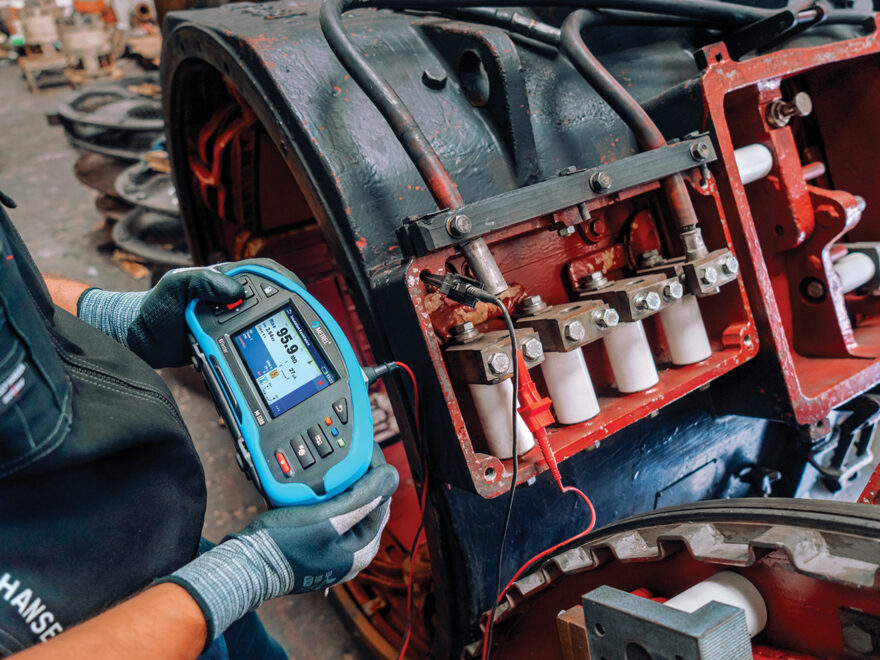With MI 3288 Earth Insulation Tester
Modern electrical insulation materials are a far cry from those of the pioneering days of electrical engineering with incomparably better dielectric properties and more durability.
However, even the best aren’t immune to degradation by weather elements, continuous use, mechanical damage, or anything else that could impair their performance. Given the importance of insulation for proper and safe operation of virtually any electrical or electronic device, accurate and timely analysis of its state and the extent of any degradation is paramount. An insulation resistance measurement is the go-to procedure, often being both the beginning and the end when it comes to insulation analysis.
There are of course other, more comprehensive, and application-specific insulation analysis techniques, but it’s hard to beat resistance measurement procedures (spot measurement, absorption rate, calculation of PI and DAR factors) for their speed (particularly spot measurement) and simplicity. Generally speaking, low insulation resistance (below safe values as prescribed by standards pertinent to the tested device or equipment) is a good indicator that something, without specifying exactly what or due to what cause, is wrong with the insulation and should be investigated before starting to use the device again.
Acceptable Insulation Resistance (Rotary Machines)
A good rule of thumb is at least 1 MΩ of resistance for every kV. Though, this number (1 MΩ) holds true only at room temperature (20 °C). At higher temperatures the requirements rise very fast – for every 10 °C, the resistance requirement increases by more than 50 % (class B rotary machines). For example, at 40 °C the resistance should be at least 2,5 MΩ for every (rated) kV.
Insulation resistance is therefore an excellent screening tool for checking older, used devices that may have been improperly stored and have suffered insulation damage before they are used again, particularly those that are, by design, subject to more severe (mechanical) stresses than others.
Moisture, Temperature, Dirt and Mechanical Stress
There are many different types of electrical insulation – the one used in domestic wiring is of course different from those used in motor and generator windings. The latter must withstand not only high, although temporary, inrush currents, but (depending on size and mode of operation) significant mechanical and thermal stresses.
Insulation is susceptible to mundane elements like moisture, which, if the conditions are right, can wreak havoc and irreparably damage the machine. In case of generators and motors, moisture may be drawn inside the machine through cooling vents or through inconspicuous cracks in those that have a dedicated, closed-loop cooling system (liquid-cooled system). Temperature fluctuations inside the machine can then cause the moisture to condense in liquid form and seep into windings’ insulation.
Moisture can enter the machine even when it is not in operation – i.e., if improperly stored, exposure to the sun and other damaging environmental influences. Such a machine or machines must be thoroughly inspected before being put into operation.

Water in all the Wrong Places
For around fifteen years a 100 kW (3-phase, 50 Hz, 400 V / 195 A, 1000 r/min) generator was in use in an off-grid micro hydroelectric power plant (Francis turbine) powering a small poultry farm and several adjacent domestic dwellings, until the plant was dismantled due to issues with the water flow. The generator was then stored in a rather dilapidated warehouse not far from the former power plant, together with some other electric machinery, including several electric motors and two distribution transformers.
The latter were all found to have had issues with insulation after they were again commissioned for further use – it was suspected that the generator, which was about to be installed in a new hydroelectric power plant, might have similar issues. With the MI 3288, Metrel’s newest earth/insulation tester, a simple spot insulation resistance measurement was taken of both the stator and rotor windings and sure enough, the result indicated significant insulation damage.
A closer visual inspection confirmed that the windings were, in places, literally soaked with water and the generator was sent for a thorough overhaul – something that could have been much more complicated and costly (already installed generator not working or breaking down soon after starting operation), if it weren’t for the MI 3288 Earth Insulation Tester.


